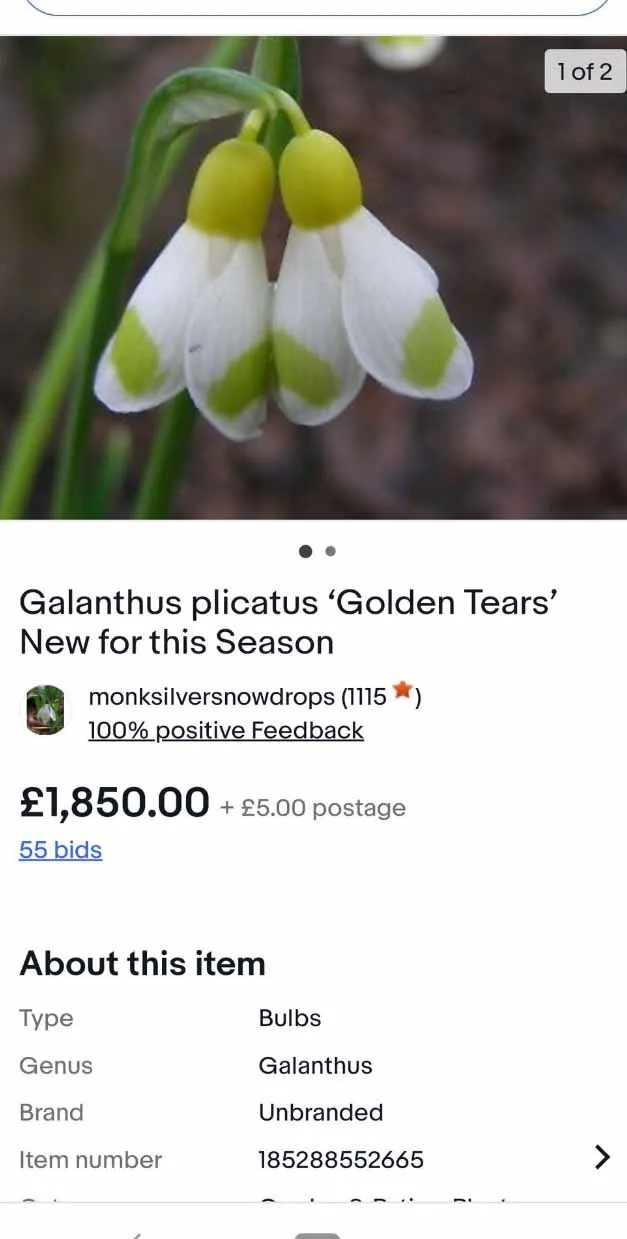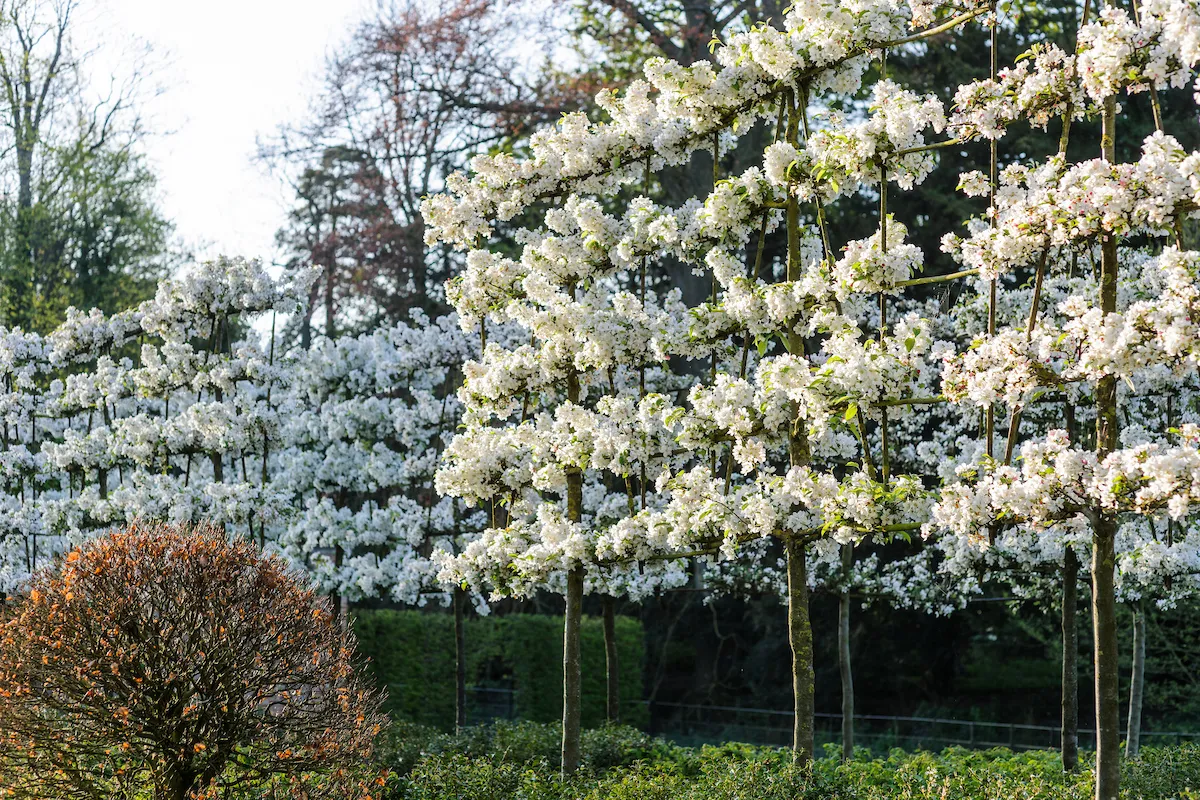How much would you pay for a plant you really covet? In recent years, some plants have fetched draw-dropping prices online and at auction and some always sell at very high prices. Often rare with unique or collectable qualities that have taken years or even decades to breed and perfect, these prized plants sell for thousands, sometimes millions, of pounds. The value is often driven up by collectors who can go to extraordinary lengths to own a desired species, and this can fuel black market trading.
You may also like
- The world's most endangered plants
- Beautiful garden furniture you can use all year round
- 10 plants with superpowers
The fascination with rare plants isn’t new. During the 17th century, tulipmania in the Netherlands saw rare tulip bulbs become so valuable they caused an economic bubble. Some bulbs fetched as much as 10 times the price of a luxury home. The Victorians were similarly gripped by orchidmania, or orchidelirium in the 19th century, when wealthy orchid fanatics sent explorers and collectors around the world in search of new varieties and species orchids, and some are still prey to 'poaching', today, changing hands for large sums on the black market.
Today, snowdrops, hepaticas, unusual houseplants and trained and pruned mature trees sell for huge sums, turning these everyday luxuries into coveted collector’s items.
Guy Watts, Owner & MD of Architectural Plants, in West Sussex, which specialises in sculptural, large, rare and exotic plants, explains that the nursery's most expensive tree is based on its age. "That tends to come with more common plants and plants that are older and can survive transplanting. Taxus baccata (Yew) is a good example, along with other good topiary plants and anything clipped like a pine Niwaki (cloud-pruned). We also have very old Cedar of Lebanon. They take a long time to get to a mature size but we have them because that is the size at which people really want to buy them."
New propagation techniques developed at his nursery are making previously expensive plants more accessible for lower budgets
Guy makes a distinction between rare and collectable plants. "Rare suggests that something is scarce in the UK," he says. "This is often because either a plant is incredibly hard to propagate and grow, meaning that getting them from a seed, or a cutting, to a sellable plant is very difficult. That is what tends to make things rare, but obviously there are other factors such as having the right climate. Certain trees come from all different parts of the world that might only grow in certain areas - a Wollemia pine is a great example. This is 'rare' because it was only found in the 1990s. Despite being initially hard to grow, it is now widely propagated. So it doesn’t necessarily correlate with value."
Guy points out that new propagation techniques developed at his nursery are making previously expensive plants more accessible for lower budgets. "A fine example is our Arbutus x andrachnoides (red-barked strawberry tree) which we love as a tree, but is incredibly rare because it is difficult to propagate successfully. We’ve developed a method in our laboratory to massively improve the survival ratio of initial cuttings to liner and into a successfully growing plant. This is just an example of a much wider group of exciting and unusual plants we are trying to make accessible to gardeners in the UK. Our specialist propagation is not about making plants expensive, it is about making them more accessible to more people." While a 40-60cm tree will still set you back £144, it is quite fast growing, reaching 25ft in 15 years.
You may also like:
Love or loathe variegated plants? They certainly divide opinion
Discover the online snowdrop bidding wars
Is it time to rein in tulip mania?
Browse our list of expensive plants and you might just feel better about over-buying plants for your garden.
The world's most expensive plants
Bonsai trees

250-year-old Juniper Bonsai Tree
$2m,
1981, Japan
Although diminutive in size, bonsai trees are some of the most expensive plants to buy because of the immense time, skill and care required to cultivate them. Shaped over decades, sometimes centuries, these miniature trees demand meticulous pruning, wiring and watering to achieve the desired appearance. These living works of art, which are rooted in Japanese tradition, are highly collectable and rare specimens such as the 250-year-old Juniper Bonsai tree sell for millions. The tree forms part of the Mansei-en Garden in Omiya Bonsai Village in Saitama City, Japan.
Hyacinth

Hyacinth 'Midnight Mystic',
£150,000 for three,
2008, Netherlands
Horticultural company, Thompson & Morgan bought three ‘Midnight Mystic’ hyacinth bulbs at auction in 2008 for a record-breaking £150,000. The bulbs were purchased from the Keukenhof Gardens in the Netherlands and were believed to be the only known surviving bulbs of the rare 17th century Dutch hyacinth with connections to the golden age of Dutch flower breeding. As well as the historical significance, its striking purple flower and strong fragrance contributed to the plant’s desirability and incredible sale price.
Snowdrops

Galanthus plicatus ‘Golden Tears’,
£1,850,
2022, UK
In recent years, snowdrop collecting has become more popular and competitive. At the start of every year, galanthophiles (snowdrop lovers) flock to plant fairs and ready themselves at online auctions in the hope of adding a rare specimen to their collections. The record for most expensive snowdrop ever sold goes to Galanthus plicatutus ‘Golden Tears’ bred by Joe Sharman of Monksilver Nursery. It was sold in 2022 for a staggering £1,850 on Ebay, beating the previous record-holder ‘Golden Fleece’ (also bred by Sharman), which sold for £1,390.
Read more about online snowdrop bidding wars
Hepaticas

Dainty and charming, hepaticas are one of the prettiest spring flowers. They have almost cult status in Japan, where they have been collected since 1603. It is the source of diverse wild-origin ultivars, particularly forms of Hepatica noblis var. japonica f. magna, which has become hugely influential, both in its natural state and among hybridisers.
Hepaticas are a challenge to produce in bulk for commercial distribution. The seeds – technically achenes, or single-seeded fruit – need to be sown immediately when ripe and must be exposed to frost the following winter to germinate. As a result, they tend only to be available from enthusiasts and specialist growers and can command high prices and sell out fast; a sought-after variety can fetch around £450 in the UK.
Cloud-pruned trees

Many plants, such as box, Ilex crenata and Scots pine, Pinus sylvestris, are shaped as topiary, and command hefty prices. Even more expensive, however, are mature plants that have been cloud pruned. This process requires years of skilled pruning and shaping to achieve a unique, sculpted appearance - a labour-intensive process that results in the high price tags. A 2m cloud-pruned Pinus sylvestris can cost around £4,000 to £5,000.
Pleached trees

Pleached trees are a very popular way of making a hedge on stilts - excellent for privacy, especially in urban gardens. Trees (such as plane trees Platanus x hispanica, can also be such as can be trained horizontally to create an umbrella-like canopy, providing shade and privacy over a dining area, for example. Much like cloud pruned trees, they are expensive thanks to the time and expertise needed for them to grow. They can provide an instant effect, but are certainly not cheap - we recently found a 1.8m pleached Magnolia grandiflora for sale for £959.
Multi-stem trees

Garden designers are increasingly planting multi-stem trees, and it's easy to see why - their attractive form has instant impact and they look attractive even when bare in winter. They look especially good in small gardens.
Multi-stem trees are produced by coppicing, a pruning technique whereby the trunk of a tree or shrub is cut down at soil level. It looks brutal, but the shock to the plant’s system results in it producing several new trunks from the base. It is a technique traditionally employed in woodlands to provide a sustainable crop of wood. In gardens the method is often used to produce young, coloured stems on dogwoods and willows or to encourage large leaves on trees such as Paulownia and Catalpa. Philip Nieuwoudt, from specialist nursery New Wood Trees in Devon, spends between three and five years training multi-stem
trees to reach a size that will have instant impact in the garden.
Prices for multi-stem trees can vary hugely, depending on size and variety. We recently found a 6m multistem Quercus ilex retailing for £6,500, but if you can pick up some much smaller trees for a few hundred pounds - or if you are patient, you can try shaping your own.
Read about trees for small gardens
Monstera

Rhaphidophora tetrasperma,
£14,000,
2021, New Zealand
Fuelled by social media, Monstera are sought-after houseplants, and variegated types can fetch impressive prices. In 2021 a cutting of Rhaphidophora tetrasperma, more commonly known as the Mini Monstera, sold for £14,000 at auction in New Zealand. Although not a true Monstera, the plant shares a similar leaf shape, and this variety had a rare, variegated pattern which drummed up interest among collectors who are always on the lookout for new and unusual plants. The pattern was distinct but irregular and created a striking contrast against the darker green of the leaf.
Love or loathe variegated plants? They certainly divide opinion
White truffle
$1.1m,
2010, Macau, China

White truffles from the Piedmont region of Italy are a luxury ingredient and in 2010, a weighty 1.89kg specimen sold for a record-breaking $1.1m at an auction in Macau, China. It beat a previous record of $429,000 for a 1.5kg truffle found in a Tuscan wood near Pisa, also sold in Macau in 2007.
Strawberry
$14,000,
2016, Japan
The Bijinhime ("beautiful princess") strawberry is a Japanese variety renowned for its size (often double the size of a regular strawberry), sweet flavour and heart-shaped appearance. A single Bijinhime strawberry, which was considered to be a perfect specimen, was sold at a New Year auction in Japan for an outstanding $14,000 in 2016.